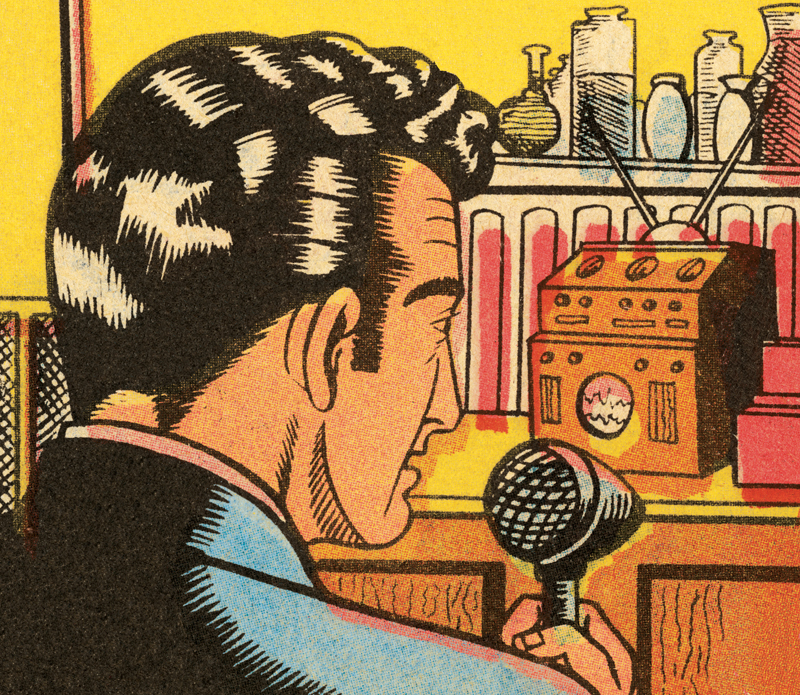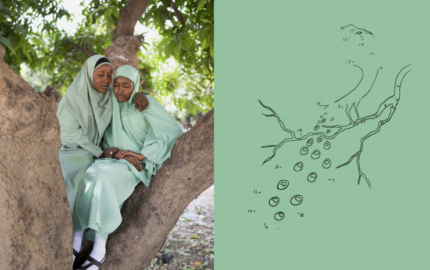She began podcasting with the same professional approach to audio as in her paid career—careful attention to sound and storytelling—and invited guests onto the show for intimate, nonjudgmental examinations of parenting. In one recent episode, an African-American mother discussed her difficulties with being frequently asked if she was her biracial son’s parent. In another, a guest tells the story of her home-based stillbirth.
“Right away strangers started e-mailing,” all of whom found the show by word of mouth, according to Frank. She now hosts two active Facebook groups, which, she says, “is the best way of communicating with my audience.”
Frank worked for free for three and a half years and produced the shows irregularly, averaging less than one a month. Still, they caught on. She launched a Kickstarter campaign in 2013 to raise funds to produce two episodes a month for six months, and it was successful. This summer, New York Public Radio (WNYC) picked up “The Longest Shortest Time” as one of its latest official podcasts; Frank now receives funding from WNYC for her own efforts and for support staff.
Podcasting 101
Cynthia Graber talks about what goes into making a great podcast
Frank’s story is part of the remarkable resurgence of podcasting. Apple integrated podcasts into iTunes all the way back in 2005. “There was an initial hope and hype that lasted for about two years and then petered out,” says Jake Shapiro, executive director of the Public Radio Exchange (PRX), a site for the distribution and licensing of public radio stories. The format didn’t work well—in part because the technology wasn’t easy to use. Consumers had to find the podcasts, subscribe to them, manage them, and then figure out how to listen to them.
"First Listen"
Apple’s iTunes carries more than 250,000 podcasts. Here are a few of the best for journalists
Today, podcasting is making a comeback, in part because the technology—smartphones and audio recording programs—is easy to use. According to the Infinite Dial 2014 study, the latest from Edison Research on consumer adoption of digital media, more than 60% of the American public has a smartphone. (This increases to 80% of the 18- to 34-year-old demographic.) Apps like Stitcher encourage seamless podcast listening, and websites like SoundCloud make embedding and sharing audio a snap.
The result: Thousands of podcasts are available on iTunes, with an offering for seemingly every interest—from Neil deGrasse Tyson’s “StarTalk Radio” to “Common Sense” with Dan Carlin. Thirty percent of those surveyed by Edison Research had listened to a podcast at least once, up from 11% in 2006. About 39 million Americans have listened to a podcast in the past month, and of those, 20% consume six or more podcasts a week. Digital audio can reach a niche audience with a sound that inspires community and a passionate fan base. According to Eric Nuzum, NPR’s vice president for programming, the network measures success for a typical radio show in the hundreds of thousands or millions of listeners. “In podcasts,” he says, “you can have what we lovingly call a tribe”—perhaps 50,000 to 60,000 engaged listeners.
Finding that tribe is essential to financial sustainability, which is ultimately what will determine whether the new wave of podcasters like Frank will have the time and funding to experiment with this form of audio storytelling.
Apple integrated podcasts into iTunes in 2005 but back then it was difficult for consumers to find, subscribe to, and figure out how to listen to them
Many popular podcasts originated via traditional public radio. “Radiolab,” created at WNYC and first aired there, gained a large international audience by podcasting its unusual mix of sound and storytelling about science-based themes. “Planet Money,” a spin-off of “This American Life,” was created entirely for digital broadcast and offers in-depth stories about economics that utilize narrative tools the creators learned from “This American Life.” Says co-creator Alex Blumberg, “You want stakes, you want it to be universal, you want moments of feeling and reflection, and you need a question going into it and through it.”
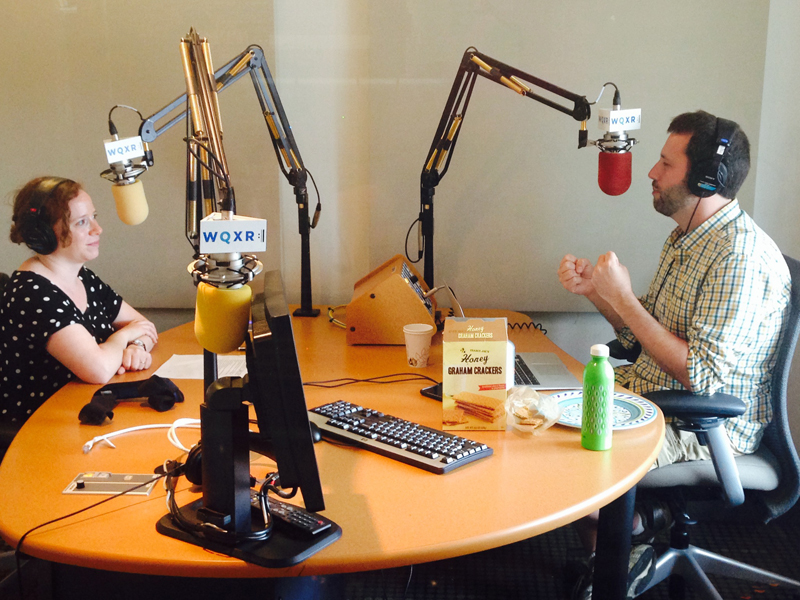
Podcasting could offer a potential threat to public radio, if listeners turn to audio-on-demand. That hasn’t happened yet. According to Nuzum, public radio attracts 27 million listeners a week, a number that “has held rather stable and grown slightly.” In addition, of the top 10 podcasts on iTunes as of August, five were public radio broadcast shows and a sixth was a podcast produced by WNYC.
“I think the attitude NPR has taken is to disrupt ourselves,” says Nuzum, which is why it’s producing original digital-only content. “So far as disruption goes, it’s kind of inevitable. The question is, what’s our role going to be in whatever replaces the current media experience? Our goal is to be wherever the listener wants to find us.”
Podcasting offers opportunities simply not available on traditional audio broadcasting networks. “The broadcast signal only has so many hours in the day and days in the week,” says Thomas Hjelm, executive vice president and chief digital officer of New York Public Radio. “Producing new podcasts expands and breaks apart the traditional radio schedule and allows us to produce new content in new ways that otherwise wouldn’t fit in our schedule.”
“Death, Sex & Money,” a new podcast developed in-house at WNYC, fits this model. The pieces, at about 15 to 30 minutes each, are longer than would air on a more tightly edited show, and host Anna Sale interviews guests about topics, such as vasectomies and financial woes, which might be taboo in polite conversation.
Sale’s show highlights another advantage of podcasting. Public broadcasting, by its very name, has to appeal to the general public. Podcasts don’t. Hosts and guests can curse, joke, and deal with topics that might make some listeners squirm.
Online magazine Slate hosts about a dozen podcasts, each geared to a particular market or interest. Andy Bowers, executive producer and creator of Slate’s podcasts, points to a recent episode of “DoubleX Gabfest,” a show about women’s issues, which featured a long discussion of menstruation. On the “Political Gabfest,” during which three hosts chat about the latest in national and international politics, says Bowers, “They’re not going to tell you who Harry Reid is. If you don’t know, you’re not going to find this podcast interesting.”
Mike Pesca, a producer and reporter at NPR since 1997, left his most recent position as sports reporter to host a daily Slate talk show called “The Gist.” He’d long been interested in his own show, he says, and Slate offered the opportunity for the irreverent tone he hoped to create: “It’s not meant to be for everyone. ‘ATC’ [‘All Things Considered’] is meant to be for everyone. If they’re alienating the audience, they’re probably not doing something right. But if I’m not alienating a part of the audience, I’m probably not doing something right.” His podcast has already become one of Slate’s most popular offerings.
The easy familiarity with which Pesca engages both guests and listeners represents another opportunity in podcasting. Listeners seem to gravitate toward a looser, friendly, chattier tone, one in which they feel a connection with the hosts. “It’s the most intimate of mediums,” says “Planet Money” co-creator Blumberg. “It’s even more intimate than radio. Often you’re consuming it through headphones. I feel like there’s a bond that’s created.” Bowers believes this may be one reason behind the failure of The New York Times podcasts, many of which were discontinued in 2011. They focused on news, he argues, instead of perhaps the Opinion page, which might provide personalities better suited to podcasting.
Podcast listeners seem to gravitate to a looser, friendly, chattier tone, one in which they feel a connection with the hosts
Some topic-based podcasts, such as Slate’s, focus primarily on interviews and are only loosely edited. Others, like “99% Invisible,” which covers design and the built environment, created and hosted by Roman Mars, are sound-rich, tightly written and edited pieces. These take significantly more time to edit and produce. But as the success of “99% Invisible” and “Planet Money” have demonstrated, a well-produced and reported show can reach outside its niche. Each new “99% Invisible” podcast receives more than 200,000 listeners when it first airs and tens of thousands more as the weeks go on, an audience diversified well beyond the designers and architects who made up its original supporters.
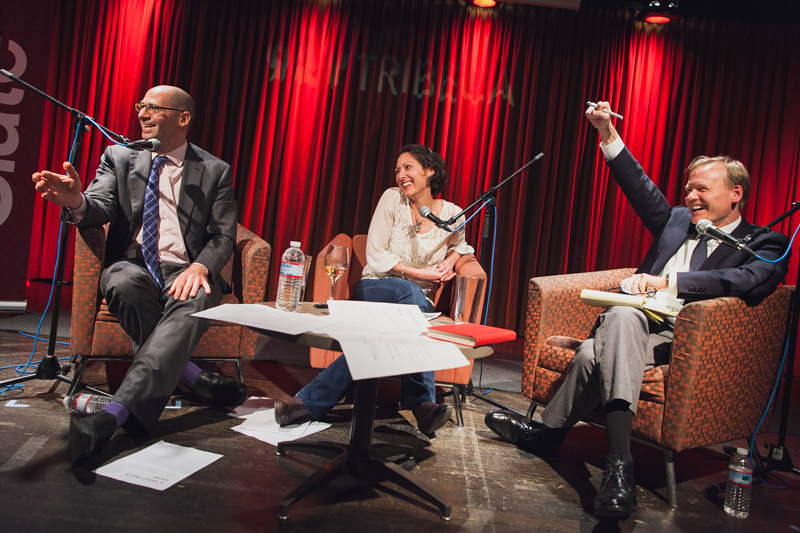
Such fans can become passionate, willing to pay for live events and to contribute financially to a podcast’s success. “If you took the audience for all Slate podcasts, it wouldn’t equal one of the [NPR] broadcast shows that are also podcast,” says NPR’s Nuzum. “But the numbers Slate needs in order to pay for itself and to be successful are smaller.” According to Shapiro, PRX sees success at around 50,000 downloads an episode. Blumberg says to be financially viable, a new podcast will probably need to reach around 100,000 downloads per episode.
A quick look at the top podcasts on iTunes shows that hosts are overwhelmingly white and male, an imbalance perhaps explained in part by the fact that the early adopters of the form were technology enthusiasts, who also tend to be overwhelmingly white and male. Sue Schardt says that the Association of Independents in Radio (AIR), which she heads, is working to increase diversity on public radio through programs such as Localore, which embeds producers at radio stations so that they can help underserved communities tell their stories. Schardt hopes podcasting can attract more women and people of color, as hosts, producers, and listeners.
The main challenges for new podcasts—past the content-generation stage—remain finding an audience and a steady source of funding. Some podcasts succeeded in reaching listeners simply by being early to the space. The science-themed “Skeptics Guide to the Universe” began in 2005, when there were few science podcasts. It remains in the top 10, reaching about 150,000 downloads for each new episode. Scientific American’s podcasts, including the weekly interview “Science Talk” and daily news offerings called “60-Second Science,” “60-Second Earth,” “60-Second Tech,” and so on, began in 2006 and remain popular. They’re also fully funded by the magazine. (Full disclosure:I podcast regularly for Scientific American’s “60-Second Science.”)
Many other news sources—including The New Yorker, Grantland, and The Economist—host a suite of podcasts. Slate offers about 12 podcasts and is considering expanding. For online news sources, the shows largely tap into their existing writers and editors, which reduces costs, and can reach a ready-made digital audience. In addition, for Slate, podcasts have been a driving force behind the newly created Slate Plus, a premium product for $5 per month, which offers ad-free listening and additional podcast content among other extras. Slate Group chairman Jacob Weisberg has said the site is profitable and Slate Plus is on track to sell 10,000 subscriptions this year.
Max Linsky, one of the hosts of the “Longform” podcast, on which writers are interviewed about their experiences and their craft, admits he and his colleagues didn’t expect anyone to listen at first. So in 2012 when the show started, they paid little attention to sound quality and engineering. But they had some major advantages. First, they hosted their podcast on the popular Longform website, which recommends new and classic nonfiction. Second, they interview famous writers, whose pieces appear on Longform and who have a passionate fan base. In terms of funding, Linsky had already worked on attracting advertisers to Longform.org, so offering a podcast was a relatively simple addition.
Compared to newspapers, magazines and websites, “Podcast advertising is by far the most effective and least offensive advertising that I’ve ever encountered,” he says, because hosts introduce the ads in a conversational manner that seems to appeal to listeners.
Podcast ads have also demonstrated a higher response rate than other forms. “Advertisers love it. Listeners don’t seem to mind it at all,” says Linsky. Advertising revenue bought them professional audio equipment and pays the hosts and the audio engineer. Enthusiastic podcast listeners also drive attention to Longform.org, which increases readers and thus advertising revenue on the site.
Some podcasts get financial backing from an institution, like Sale and Frank do at WNYC. Lea Thau receives about one-third to one-half the funding she needs to create the monthly “Strangers” podcast, which provides an intimate dive into people’s lives, from KCRW, a public radio station in Los Angeles. And Roman Mars began “99% Invisible” with the support of San Francisco station KALW and the American Institute of Architects. Frank, Thau, and Mars all gained a financial boost through Kickstarter campaigns.
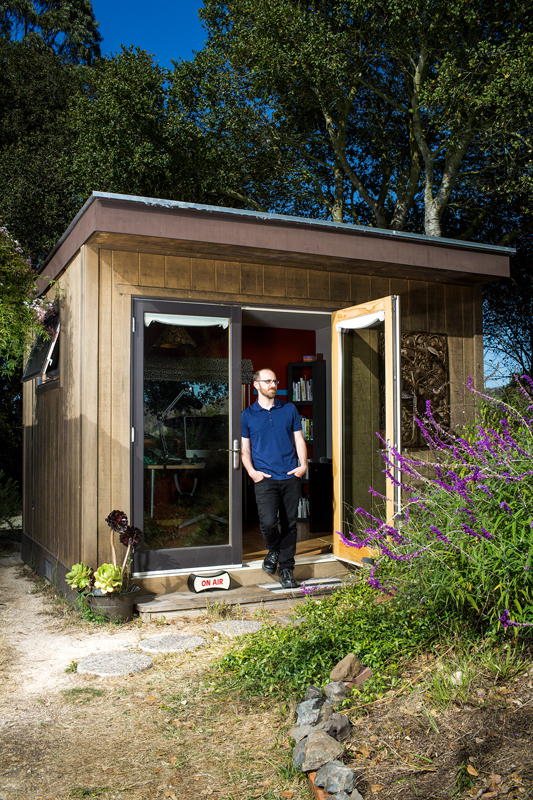
“Planet Money” raised $600,000 on Kickstarter for its 2013 series on the international production chain involved in making a T-shirt. Supporters received a T-shirt for their donation. Blumberg believes this model—listeners contribute to a specific project and receive awards related to that project—could work for future campaigns. It’s one of the ways he hopes to fund his as yet unnamed podcasting network, which will begin with three shows in the first year.
His and other such networks, like Radiotopia, formed in part as a way to simultaneously solve the questions of audience and funding. The networks offer podcasts with a somewhat related sound that might appeal to the same audience. Podcast hosts may advertise each other’s shows in the network, and for some there’s a central fundraising operation.
Public radio stations are also positioning themselves as curation specialists. WNYC developed a listening app and recently added a “discover” feature. Users can plug in how much time they have and their interests, and the app generates a playlist from not only WNYC content but elsewhere, such as New Yorker and Slate podcasts, which WNYC believes will appeal to their listeners. For most podcasts, new and old, recognition on traditional public media or other popular podcasts can be make or break. “Death, Sex & Money,” for example, was featured on “This American Life,” which dramatically increased the number of early listeners.
“This is not unlike college radio stations or even the early days of public broadcasting, when the airways and the satellite system opened up,” says AIR’s Schardt: There’s a freewheeling, experimental feel to the space along with the open question about which business models work. Podcasts that find their tribe just might have the chance to answer that question.
